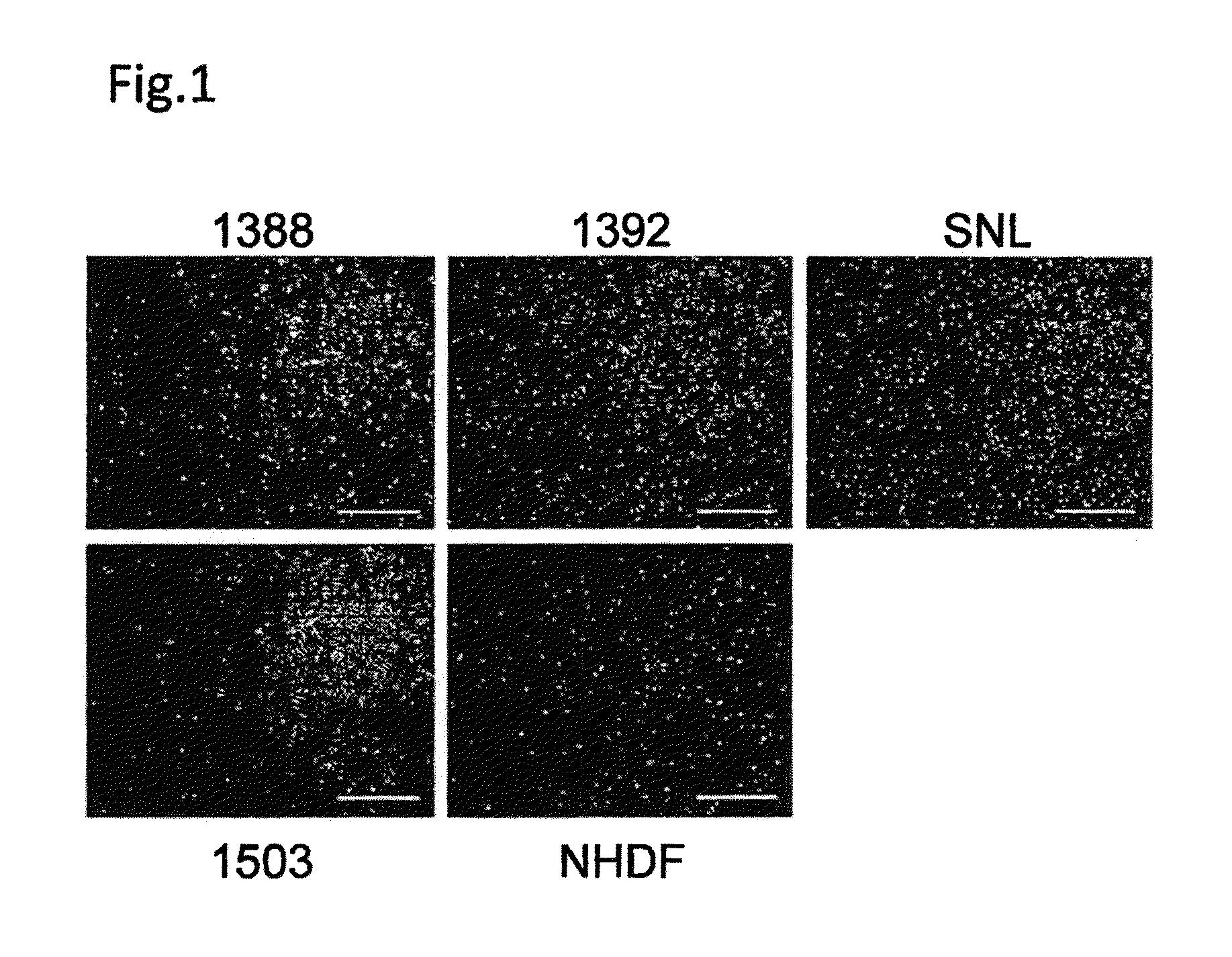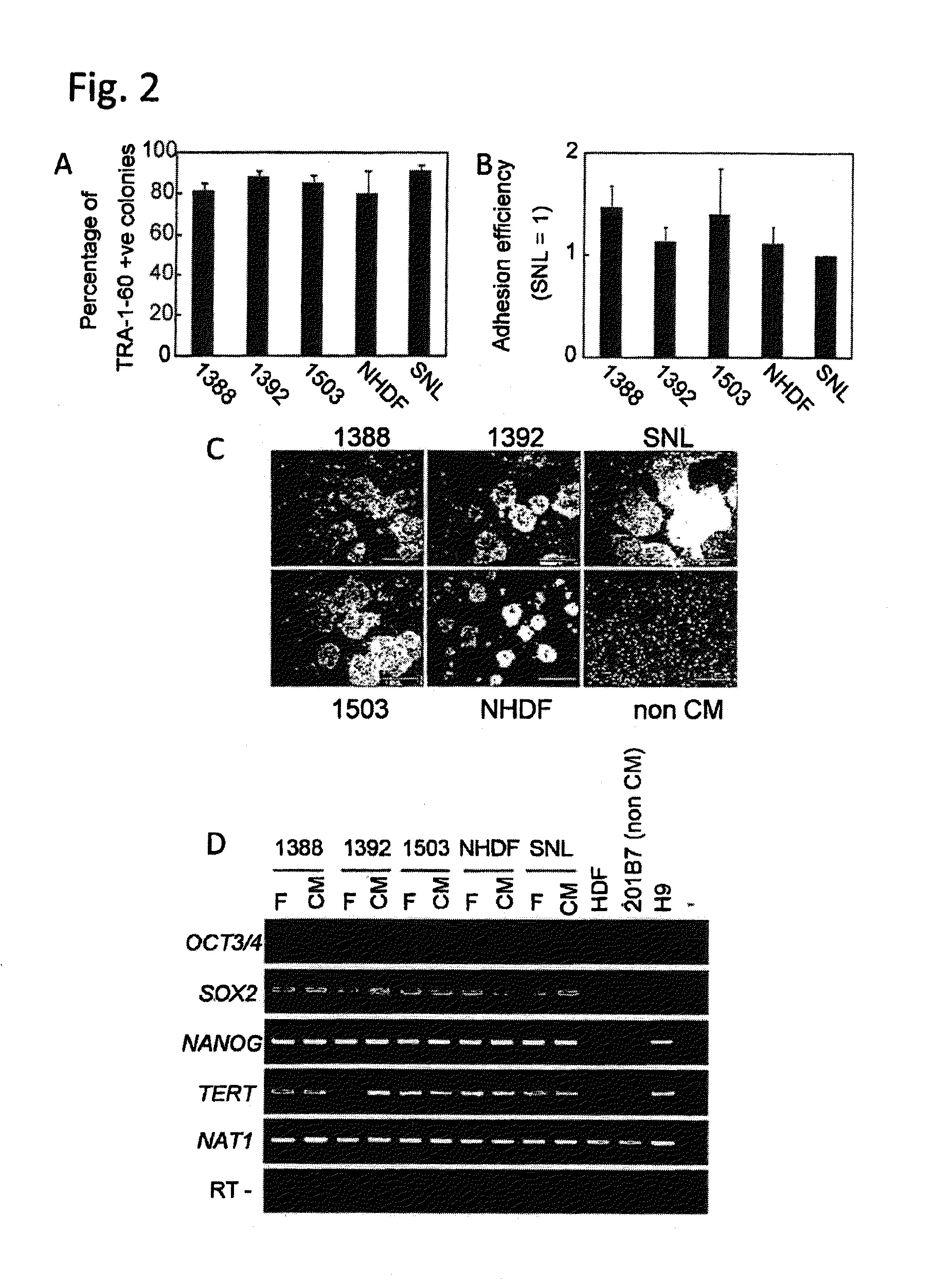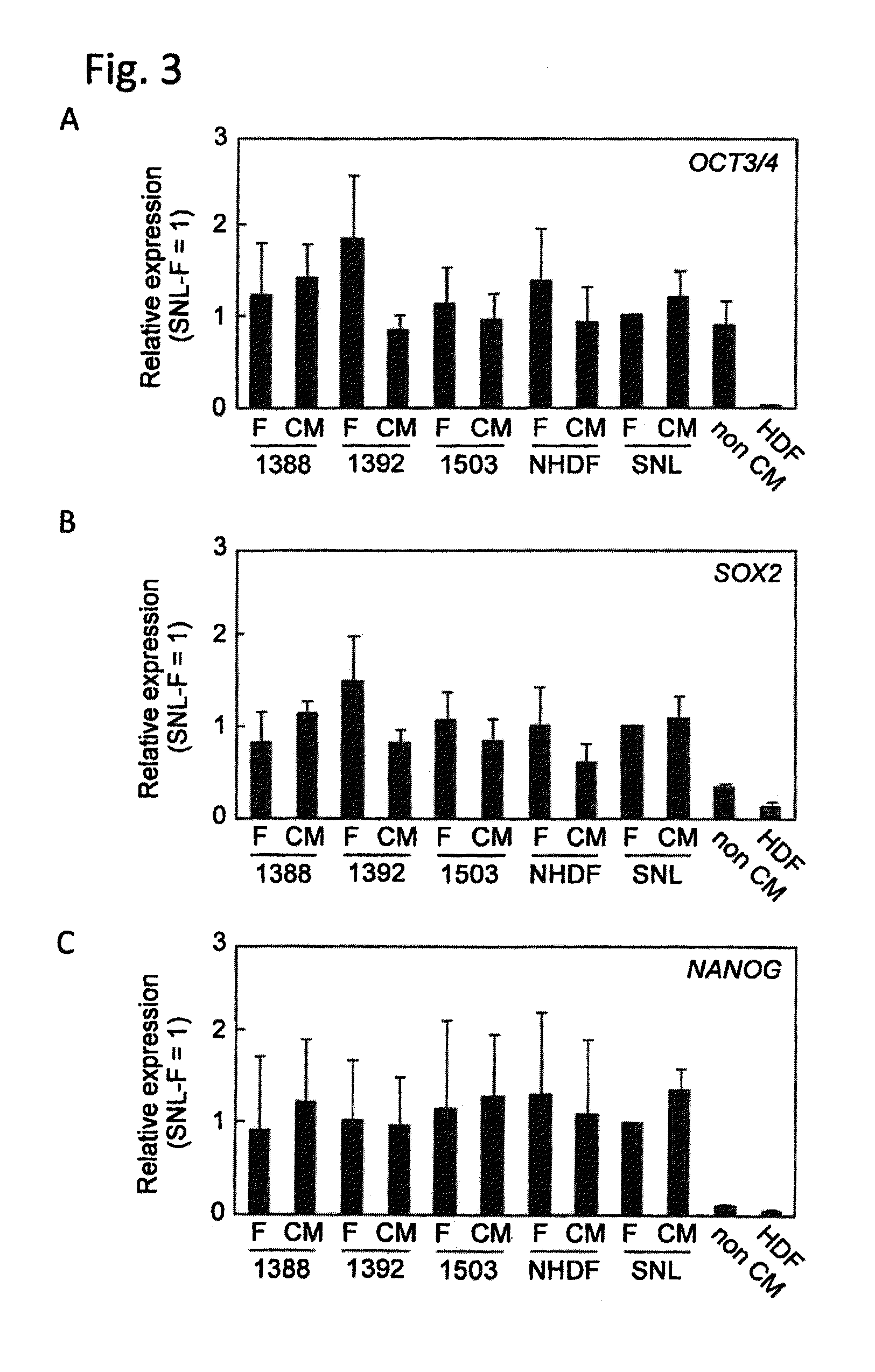Method for producing induced pluripotent stem cells and method for culturing the same
a technology of induced pluripotent stem cells and culturing methods, which is applied in the direction of artificial cell constructs, genetically modified cells, skeletal/connective tissue cells, etc., can solve the problems of difficult to completely remove feeder cells from ips cells cultured together with feeder cells, and the use of ips cells established and cultured by a conventional method is not suitable for human therapy, etc., to achieve efficient culture
- Summary
- Abstract
- Description
- Claims
- Application Information
AI Technical Summary
Benefits of technology
Problems solved by technology
Method used
Image
Examples
example 1
[0090]Four human fibroblast strains (NHDF, 1388, 1392 and 1503: neonate, 36 years old female, 56 years old male and 73 years old female, respectively) and SNL (STO cell-derived cells) were treated with mitomycin C and plated on culture plates (FIG. 1). Subsequently, an iPS cell strain derived from 1388 (201B7: WO2009 / 057831) was plated on each of the above-described fibroblasts at a standard concentration (iPS cells:fibroblasts=1:5). As a result, the 5 types of fibroblasts aided undifferentiation-maintenance culture of the iPS cells, as feeder cells. The contents of TRA-1-60-positive cell colonies were equivalent among the cases where the respective fibroblasts and SNL were used (FIG. 2A). There were no differences in the adhesion efficiencies among the iPS cells on the respective fibroblasts (FIG. 2B).
[0091]Subsequently, to study whether self-replication of iPS cells is possible even in cases where they are cultured using the culture supernatant of fibroblast cells, iPS cells (201B...
example 2
[0092]To study whether human iPS cells can be established on human fibroblasts, 4 nuclear reprogramming factors (Oct3 / 4, Sox2, Klf4 and c-Myc) were introduced to human fibroblasts (NHDF, 1388, 1392 and 1503) by a retrovirus. Six days after the introduction, the above cells (5×105 cells) were transferred to a dish (100 mm) without feeder cells and cultured under conditions for human ES cells. During the culture, the cells became confluent and exhibited a feeder cell-like morphology. Two weeks after the introduction, ES cell-like colonies appeared on cells exhibiting a fibroblast-like morphology. Twenty five days after the introduction, ES cell-like colonies (FIG. 4A) were picked up and co-cultured with mitomycin C-treated parent fibroblasts as feeder cells.
[0093]Between the culture with the SNL-derived fibroblasts (Isogenic) and the culture with the culture supernatants of the SNL-derived fibroblasts (feeder-free), there were no differences in the number of ES cell-like colonies (Tab...
example 3
[0095]The amounts of transcription of Oct3 / 4, Sox2, Nanog and TERT in the iPS cell clones established in Example 2 were confirmed by RT-PCR, and it was shown that these were equivalent to those in H9 (ES cells) and 201B7 (iPS cells) cultured using SNL as feeder cells (FIG. 4C).
[0096]As a result of investigation of the total amount of expression and the amount of endogenous expression of Oct3 / 4 and Sox2 by quantitative PCR, it was confirmed that transcription from the retrovirus vector was silenced (FIG. 5).
[0097]Further, methylation of the promoter regions of pluripotency-related genes such as Oct3 / 4 and Nanog in the iPS cells maintained and established using the autologous cells as feeder cells was investigated by immunoprecipitation using the anti-methylation cytosine antibody, and it was confirmed to be equivalent to that in H9 (ES cells) (FIG. 6). On the other hand, the upstream of each of Wnt5A, IGF2 and Slc5A4 in the above iPS cells was highly methylated. From these data, it w...
PUM
| Property | Measurement | Unit |
|---|---|---|
| fibroblast-like | aaaaa | aaaaa |
| cell density | aaaaa | aaaaa |
| cell morphology | aaaaa | aaaaa |
Abstract
Description
Claims
Application Information
 Login to View More
Login to View More - R&D
- Intellectual Property
- Life Sciences
- Materials
- Tech Scout
- Unparalleled Data Quality
- Higher Quality Content
- 60% Fewer Hallucinations
Browse by: Latest US Patents, China's latest patents, Technical Efficacy Thesaurus, Application Domain, Technology Topic, Popular Technical Reports.
© 2025 PatSnap. All rights reserved.Legal|Privacy policy|Modern Slavery Act Transparency Statement|Sitemap|About US| Contact US: help@patsnap.com



